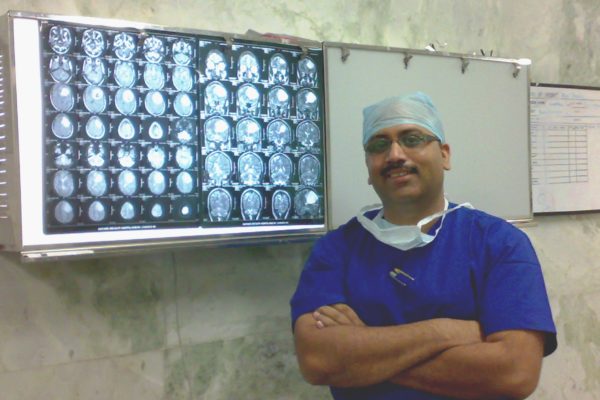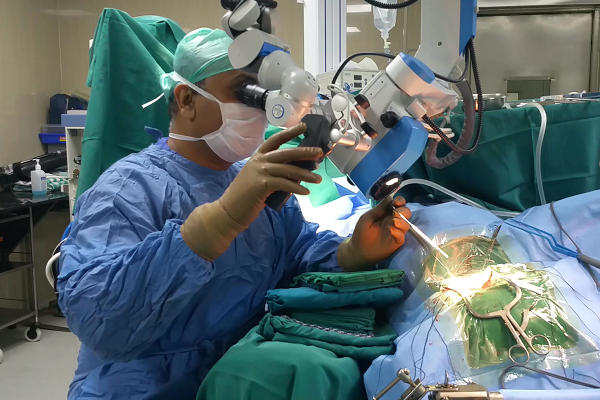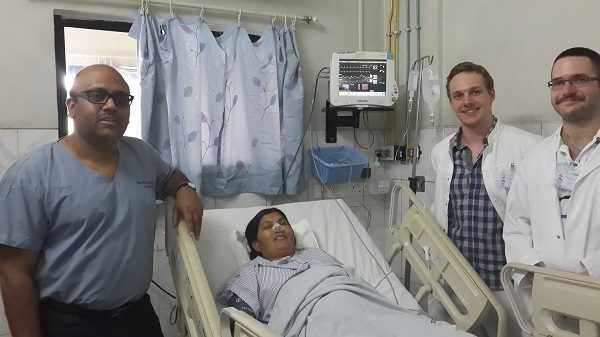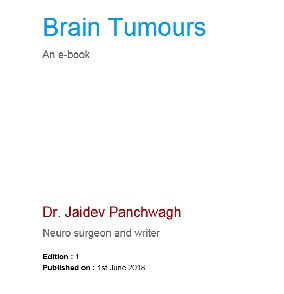The symptoms can broadly be divided in three groups
I) RAISED ICP (INTRA CRANIAL PRESSURE) SYMPTOMS
Unlike other organs in human body such as stomach, the brain is housed in a rigid cavity (skull). As a tumour grows in size, the bony skull cannot expand to accommodate it and the pressure inside skyrockets. This is called raised Intra Cranial Pressure (ICP).
The symptoms of raised ICP are varied and include :
- Headache
- Nausea and vomiting
- Double vision
- Irritability
- Drowsiness or loss of consciousness
II) SYMPTOMS DUE TO LOSS OF A PARTICULAR BRAIN FUNCTION
As the brain tumours progressively increase in size, they hamper the function of the part of the brain where they grow. This set of symptoms varies greatly depending on the area the tumour occupies.
Examples-
- A tumour in the right parietal motor area will cause progressive loss of power in the opposite side…i.e….left sided limbs and face.
- A tumour in the dominant-sided (usually the left) posterior temporal area will severely hamper the language function and cause inability to comprehend language.
- A tumour in the pituitary gland will cause hormonal imbalances and will press on the optic chiasma….causing vision to fail.
- A tumour in the cerebellum will cause loss of balance and inability to carry out co-ordinated tasks.
III) SYMPTOMS DUE TO THE TUMOUR CAUSING INCREASED IRRITABILITY OF THE SURROUNDING BRAIN STRUCTURES.
The most import example of this is known as seizures, epileptic attacks or simply, ‘fits’.
Other symptoms of irritation of surrounding area include:
- Tinnitus (buzzing or humming sound in the ear),
- Facial twitching and
- Trigeminal neuralgia pain
An estimated 55 to 60 percent of brain tumours will have fits sometime or the other during the course of the disease.
During a seizure or ‘fit’, one or more of the following symptoms may arise….
- Repeated jerking of one or more limbs
- Violent jerking of the entire body and a fall
- Repeated and uncontrollable lip smacking or automatic chewing movements
- Loss of contact with the surroundings
- Loss of consciousness
- Experiencing extreme fear
- Experiencing bad smell
- Frothing at the mouth
- Passing urine involuntarily
- Tongue bite.
- Backward arching of the body
- Repeated eyeball movements or up-rolls.
- Production of loud sounds involuntarily
- Shallow and rapid breathing
IV) SUDDEN LOSS OF CONSCIOUSNESS OR DEEP COMA:
The fourth type of the clinical presentation is rare but very serious. It may be avoided if the tumours are diagnosed early in the course of their development. But if left untreated, or if the tumour is asymptomatic, patients may suddenly decompensate and become comatose. Indeed, there can be sudden death. Luckily these cases are rare.
Frequent causes of such presentation are
1. Sudden massive internal bleeding in the tumour.
2. Sudden blockage in the flow of the watery fluid (the cerebro spinal fluid) due to sudden obstruction by a critically located tumour. Commonest example is a colloid cyst blocking the foramen of Monro.
3. A particularly violent seizure causing sudden death (a rare instance).







